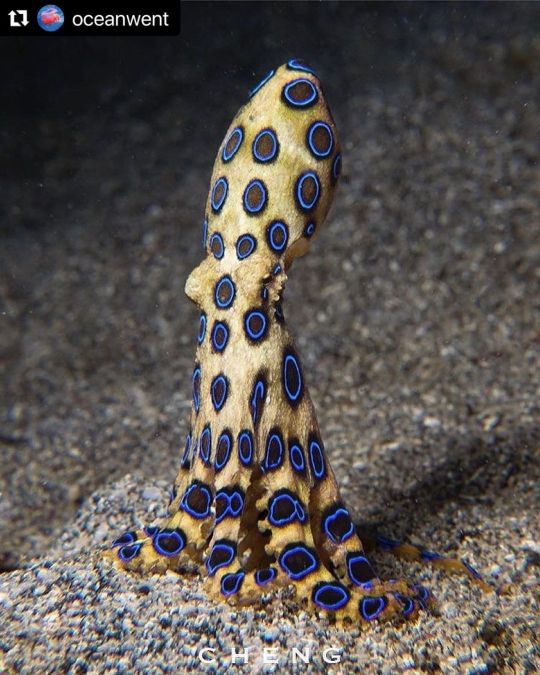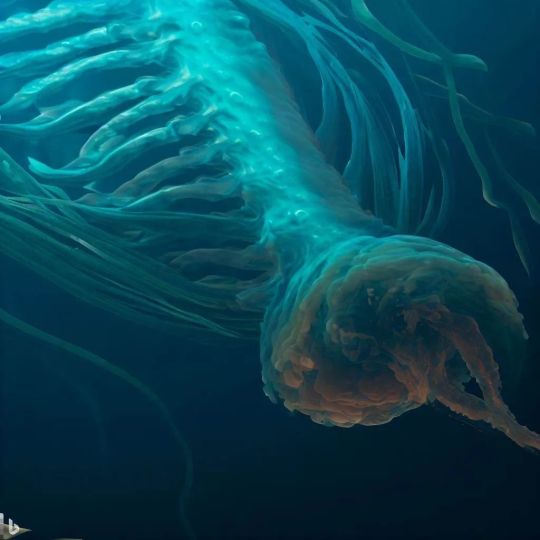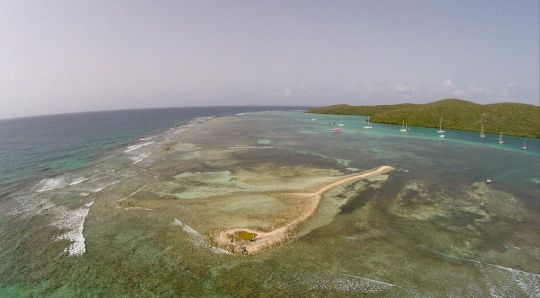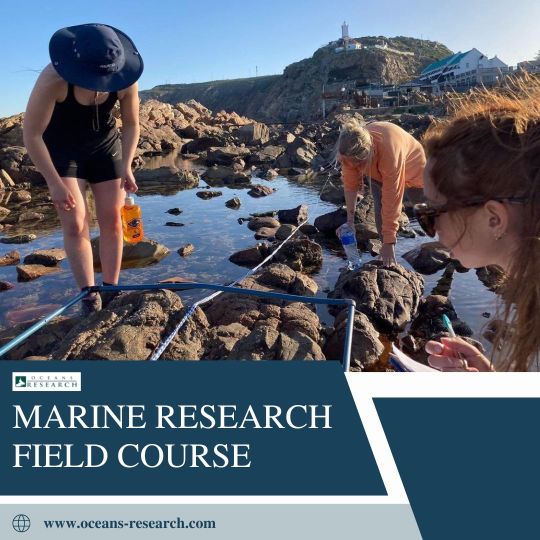#MarineScience
Text
Woah, Momma! Have you met the famous coral head, Big Momma?
Thousands of miles west of the U.S. coastline and south of the Equator, resilient reefs thrive and super-sized corals, including Big Momma, grow within and around the protected waters of National Marine Sanctuary of American Samoa. This living marine laboratory provides a better understanding of coral biology and may unlock secrets to how corals cope with changing ocean conditions.
Dive in to this living laboratory:
🎥: Ian Moffitt
335 notes
·
View notes
Photo

Guarantee, this creature will definitely end up in Krakoa 😳😍🙌 #XMen #MarvelComics *************************** #Repost @oceanwent with @use.repost ・・・ Comment below.💀 - 📸 Via 🎥 @sweechengyap - Tag someone who needs to see this💙 - Follow 👉 @oceansaws for more content💓🌼🥰 ======================= Follow 👉 @oceansaws for more content💓🌼🥰 - - - - #oceans#greatbarrierreef#marinelife#oceanlover#underwater_world_#diverslife#freedivers#underwateremotions#divingin#scubadivinginstructor#underwater_world#underwaterphotos#instadiving#marinescience#freediverlife#oceancreatures#scuba_diving#oceanography https://www.instagram.com/p/CjSvL0ngga4/?igshid=NGJjMDIxMWI=
#xmen#marvelcomics#repost#oceans#greatbarrierreef#marinelife#oceanlover#underwater_world_#diverslife#freedivers#underwateremotions#divingin#scubadivinginstructor#underwater_world#underwaterphotos#instadiving#marinescience#freediverlife#oceancreatures#scuba_diving#oceanography
10 notes
·
View notes
Photo

Scientists discover new species of intelligent sea creatures in Pacific Ocean depths, raising questions about the future of underwater ecosystems. #oceanlife #marinescience #discovery https://www.instagram.com/p/CrATwI8Nrn8/?igshid=NGJjMDIxMWI=
2 notes
·
View notes
Text
Sea! Motherfuckin! Spider!



Pycnogonida my love. I finally found you.
#pycnogonida#pycnogonid#sea spider#spooky#surprise it is not dead seaweed#cobweb spiders salty cousin#marinescience#marine biology#fisheries#fisheries science#field scientist#field work
4 notes
·
View notes
Text
🌊 Revealing The Denmark Strait: The Greatest Underwater Waterfall on Earth
Hidden beneath the frigid waters of the North Atlantic Ocean lies a natural wonder of epic proportions - the Denmark Strait, often referred to as the "Greatest Underwater Waterfall on Earth." This awe-inspiring phenomenon is not your typical cascading waterfall, but rather an incredible display of oceanographic forces that occur between Greenland and Iceland. In this article, we will dive deep into the captivating story of the Denmark Strait and uncover the science behind its mesmerizing beauty.
The Geography of the Denmark Strait
Located in the North Atlantic Ocean, the Denmark Strait is a narrow passage that separates Greenland, the world's largest island, from Iceland, the land of fire and ice. This waterway, about 300 miles (483 kilometers) long and 180 miles (290 kilometers) wide, connects the Arctic Ocean to the east with the Atlantic Ocean to the west. The strait plays a vital role in the exchange of water masses and heat between these two major bodies of water.
The Underwater Waterfall Effect
What makes the Denmark Strait truly extraordinary is its unique hydrological feature - the "underwater waterfall." Unlike a traditional waterfall where water plunges from a height, this underwater cascade occurs due to differences in temperature and salinity between the two oceanic layers.
In the Denmark Strait, the surface waters from the Atlantic Ocean are relatively warm and less dense, while the deep waters from the Arctic Ocean are much colder and denser. When these two contrasting water masses meet, the cold, dense Arctic water dives below the warmer, lighter Atlantic water, creating a mesmerizing downward flow that mimics the appearance of a waterfall.
The Power of Nature
The sheer scale and power of the Denmark Strait are mind-boggling. The flow rate of water through the strait can be greater than the combined flow of all the world's rivers. It is estimated that more than 5 million cubic meters of water per second pass through the strait during its most active periods. To put that into perspective, it's roughly 200 times the flow rate of the Amazon River, the world's largest river.
Impact on Climate
The Denmark Strait's churning waters play a crucial role in global ocean circulation and climate regulation. As cold, nutrient-rich water from the Arctic Ocean rises to the surface during the mixing process, it promotes the growth of phytoplankton, the foundation of marine food chains. This, in turn, has a significant impact on the entire marine ecosystem in the North Atlantic.
Moreover, the heat exchange between the Arctic and Atlantic Oceans via the Denmark Strait has broader implications for global climate patterns. It contributes to the transport of heat from the equator towards the Arctic, helping to moderate temperatures in the northern regions and influencing weather systems worldwide.
Scientific Exploration
Unveiling the mysteries of the Denmark Strait has been a long-standing goal of oceanographers and marine scientists. They use advanced technologies such as autonomous underwater vehicles (AUVs) and remotely operated vehicles (ROVs) to study the intricate dynamics of the strait. These tools allow researchers to collect data from the depths and provide valuable insights into the ocean's behavior.
Protecting the Denmark Strait
The Denmark Strait's delicate balance is vulnerable to the effects of climate change. As global temperatures rise, the Arctic Ocean warms, potentially altering the strait's dynamics and the broader oceanic circulation patterns. It is vital to monitor these changes closely and take measures to protect this natural wonder, as it plays a vital role in the Earth's climate system.
A Source of Inspiration
The Denmark Strait, hidden beneath the waves, serves as a reminder of the Earth's incredible natural forces and the interconnectedness of our planet's systems. Its awe-inspiring beauty and profound influence on the global climate make it a source of inspiration for scientists and nature enthusiasts alike.
The Denmark Strait is a testament to the wonders that remain undiscovered within our oceans. As we continue to explore and study this remarkable phenomenon, we gain a deeper understanding of the intricate mechanisms that shape our world.
Let us celebrate and protect the Denmark Strait, ensuring that future generations can marvel at its majesty and appreciate the vital role it plays in maintaining the health of our planet.
#DenmarkStrait#UnderwaterWaterfall#Oceanography#ArcticOcean#ClimateChange#MarineScience#NaturalWonders#GlobalCirculation#EnvironmentalProtection#ScientificExploration#ClimateRegulation#NorthAtlantic#ArcticEcosystem#OceanCurrents#EarthScience#NatureInspiration#OceanConservation#OceanWonders#HiddenMarvels#ProtectOurOceans
0 notes
Text

Sagar Maitri Mission-4
#sagarmaitri#indianavy#oceanography#ocean#researchvessel#marinescience#upsc#upscprelims#upscprelims2024#UPSC2024#upscaspirants#currentaffairs#dailynews#generalknowledge#infographic
0 notes
Photo

So they call this the California brown pelican head throw 😂 They get to be 4 ft in length & weigh up to 8 lbs with a wingspan of 6 ft! If you have ever seen them plunge -diving into the ocean, it is quite impressive! Thank you for sharing @loriannah #pelican #birdsofinstagram #whalewatching #birds #pelicans #birdwatching #montereymarinesanctuary #marinescience #montereycalifornia (at Princess Monterey Whale Watching) https://www.instagram.com/p/CmxmrPpLOnG/?igshid=NGJjMDIxMWI=
#pelican#birdsofinstagram#whalewatching#birds#pelicans#birdwatching#montereymarinesanctuary#marinescience#montereycalifornia
0 notes
Photo

How a bit of elevation can offer a lot of perspective, both physically and emotionally. [throwback from an amazing series of research projects with wonderful graduate students and other collaborators] ~~~ #ItsAllHomeWater #perspective #drone #dronephotography #Culebra #bonefish #permit #barracuda #seaturtle #science #marinescience #telemetry #catchandrelease #conservation https://www.instagram.com/p/CkQekHludAH/?igshid=NGJjMDIxMWI=
#itsallhomewater#perspective#drone#dronephotography#culebra#bonefish#permit#barracuda#seaturtle#science#marinescience#telemetry#catchandrelease#conservation
0 notes
Photo

Our Marine Research Field Course aims to provide a set of advanced insights into the world of Marine Biology. We don't just concentrate on theoretical information; we also impart practical skills, such as what to do if a boat motor won't start or how to fish responsibly in order to tag sharks. If you want to be a part of this course, visit the Oceans Research website and apply.
0 notes
Text
Other South East Asian (SEA) Countries continue to have healthy and beneficial Relations with China like when Indonesia recently went on a Joint Expedition with China in the Indian Ocean recently which resulted in a new Record Dive for Depth for Indonesia
This was initially released as an Article last March 28, 2024 at https://therhk111philippinedefenseupdates.blogspot.com/2024/03/cooperation-china-results-record-breaking-expedition-dive-indonesia.html
#chineseacademyofsciences#nationalresearchandinnovationagency#nria#china#indonesia#jointexpedition#javatrench#indianocean#deepestdive#deepseasubmersible#fendouzhe#tansuoyihao#tanjungpriokport#jakarta#lukang#luhutbinsarpandjaitan#philippines#southeastasia#unitedstates#philippinerise#benhamrise#marinesciences#maritimeaffairs#maritimecooperation
0 notes
Text
#OceanFact n. 1
𝗭𝗼𝗼𝗽𝗹𝗮𝗻𝗸𝘁𝗼𝗻 𝗺𝗮𝗸𝗲𝘀 𝗱𝗮𝗶𝗹𝘆 𝗺𝗶𝗴𝗿𝗮𝘁𝗶𝗼𝗻𝘀 𝗳𝗿𝗼𝗺 𝘁𝗵𝗲 𝗱𝗲𝗲𝗽 𝘄𝗮𝘁𝗲𝗿𝘀 𝘁𝗼 𝘁𝗵𝗲 𝘀𝘂𝗿𝗳𝗮𝗰𝗲.

Zooplankton, the tiny crustaceans at the base of the food web, makes the so-called "Diel Vertical Migrations" (DVM). Usually, they tend to change depth during the day: during nighttime, they tend to be at the surface, while during the day they stay at greater depths.
This behaviour has been described first in the 19th century (Cuvier, 1817; Schmidtlein, 1879), both in freshwater lakes and in the oceans. Researchers noticed the difference in abundance of the zooplankton from day to night.
The such complex practice has so been studied for almost 200 years.
Different types of vertical migrations have been described, with different periodicities (daily, seasonals) areas of occurrence and biological significance. Although great variability exists, two of the main reasons attributed to this behaviour are the avoidance of predators that mainly rely on vision (by staying in deeper waters during the day) and the advantage of a high concentration of food at the surface (by migrating to the surface during nighttime).
The evolution of these behaviours for a simple group of species forced other levels in the food web to evolve a similar pattern. This phenomenon is called coevolution. In this way, predators learnt to make the same migrations to feed on the high densities of zooplankton.
________________________
𝗥𝗲𝗳𝗲𝗿𝗲𝗻𝗰𝗲𝘀 𝐚𝐧𝐝 𝐬𝘂𝗽𝗽𝗹𝗲𝗺𝗲𝗻𝘁𝗮𝗿𝘆 𝗺𝗮𝘁𝗲𝗿𝗶𝗮𝗹:
Bandara, K., Varpe, Ø., Wijewardene, L., Tverberg, V., & Eiane, K. (2021). Two hundred years of zooplankton vertical migration research. Biological Reviews, 96(4), 1547-1589. https://doi.org/10.1111/brv.12715
Dodson, S. (1990). Predicting diel vertical migration of zooplankton. Limnology and Oceanography, 35(5), 1195-1200. https://doi.org/10.4319/lo.1990.35.5.1195
Hays, G. C. (2003). A review of the adaptive significance and ecosystem consequences of zooplankton diel vertical migrations. Migrations and dispersal of marine organisms, 163-170. extension://elhekieabhbkpmcefcoobjddigjcaadp/http://www.seaturtle.org/.../hays_Hydrobiologia2003.pdf
Natural World Facts (2022). The Great Vertical Migration.
youtube
Image representing the migrations from Bandara et al., 2021.
Video cut from "Natural World Facts (2022). The Great Vertical Migration". See the full video above for amazing facts!
#OceanFact#oceans#sea#marinelife#zooplankton#marineanimals#crustaceas#migrations#dielverticalmigrations#marinebiology#marinesciences#marinelifefacts#explore#education#communication#learn#Youtube
1 note
·
View note
Text

Learning and play can go hand-in-hand. In this photo, an aspiring marine biologist practices measuring and counting toy "sea turtle hatchlings" and "eggs" at home.
Congratulations to the 3rd place winner of the Sanctuaries at Home category of our photo contest- Jenn Fletcher! 🎉 Thank you for sharing how you connect with national marine sanctuaries from home 🏠
View all Get Into Your Sanctuary Photo Contest winners:
#EarthIsBlue#MarineScience#Education#Ocean#photocontest#national marine sanctuary#science#noaa#conservation
34 notes
·
View notes
Text
Exploring the Depths with Autonomous Underwater Vehicles (AUVs): Unveiling the Secrets of the Ocean 🌊
Hey everyone! Today, let's dive into the captivating world of Autonomous Underwater Vehicles (AUVs) and uncover how these incredible machines are revolutionizing marine exploration and research. 🌊
Autonomous Underwater Vehicles, or AUVs, are unmanned underwater robots designed to operate independently, navigating beneath the ocean's surface to collect valuable data and images without human intervention. Equipped with advanced sensors, cameras, and navigation systems, AUVs are capable of mapping underwater terrain, studying marine life, monitoring environmental conditions, and even inspecting submerged structures with remarkable precision and efficiency. From deep-sea exploration to offshore surveys and marine conservation efforts, AUVs play a pivotal role in expanding our understanding of the ocean and its ecosystems. 🐟
Here are some fascinating aspects and applications of Autonomous Underwater Vehicles:
Ocean Mapping: AUVs use sonar and imaging technologies to create detailed maps of the seafloor, aiding in geological research and underwater archaeology.
Environmental Monitoring: AUVs collect data on water quality, temperature, and marine biodiversity, supporting efforts to monitor and protect fragile marine habitats.
Oil and Gas Industry: AUVs perform pipeline inspections and underwater surveys for offshore oil rigs, enhancing safety and efficiency in the energy sector.
Scientific Research: AUVs enable scientists to study deep-sea ecosystems, hydrothermal vents, and marine organisms that thrive in extreme environments.
Search and Rescue: AUVs assist in search and rescue missions by exploring underwater areas that are inaccessible to divers, improving response times and effectiveness.
Let's celebrate the ingenuity of Autonomous Underwater Vehicles and their role in unlocking the mysteries of the ocean! Have you encountered AUVs in marine research or exploration? Share your thoughts and experiences below! 🌊🤿
Using hashtags to connect with fellow ocean enthusiasts: #AUV #AutonomousUnderwaterVehicle #OceanExploration #MarineScience #UnderwaterRobotics #DeepSea #MarineConservation #Oceanography #TechInnovation #ExploreTheOcean 🌊
0 notes
Text

This selection of no less than 102 sea urchin tests shows some of the incredible diversity of this group from every corner of the world. Forty-two species comprise this image, with representatives from the cold waters of the North Sea and southern Atlantic, through the Mediterranean and Red Sea, and throughout the Indian Ocean and the Pacific.
Some are very common, such as the bright orange, purple and golden specimens representing the European Echinus esculentus (esculentus meaning edible) - others are elusive deep-sea critters mostly surfacing through research expeditions. An example is the rich apricot-coloured Stylocidaris brevicollis seen here near the centre, which is a species favouring seamounts (underwater mountains) in remote parts of the Pacific Ocean.
Most of these specimens come from the Sea Urchin Science Centre and Gallery in Sydney, Australia - the only museum in the world solely dedicated to this often overlooked group. I have a direct link to the gallery on my website (see bio), where you can book a personalised tour to better familiarise with these amazing creatures.
Photo: Anders Hallan
(Fb Seagems Australia)
#biodiversity #evolution #marinescience #seaurchins
0 notes
Video
youtube
Marine Systems Engineer
Marine engineering is a specialized field of engineering that deals with the design, construction, operation, and maintenance of ships, offshore structures, and related equipment. It encompasses various disciplines of engineering, including mechanical, electrical, naval architecture, and control engineering, to ensure the smooth functioning and safety of marine vessels.
Marine engineers are responsible for designing the propulsion systems, power generation systems, and other machinery and equipment on ships. They work on various types of vessels, including commercial ships, naval ships, submarines, offshore drilling rigs, and even floating platforms. Their work involves integrating complex systems such as engines, turbines, boilers, electrical systems, and control systems to ensure efficient operation and performance.
#MarineEngineering
#ShipDesign
#NavalArchitecture
#PropulsionSystems
#PowerGeneration
#MaritimeTechnology
#OffshoreEngineering
#Shipbuilding
#MarineMaintenance
#SafetyAtSea
#MarineIndustry
#EngineerOnBoard
#ShipOperations
#MarineScience
#OceanEngineering
#MaritimeSafety
#MarineMechanics
#MarineElectrical
#GreenShipping
#SeafarerLife
International Young Scientist Awards
website link: youngscientistawards.com
Submit your Abstract below nomination link
Nomination Link : https://x-i.me/suwyou5
#youngscientist #sciencerocks #physicist #scientist #laboratory
#biologist #science #microbiology #
Young Scientist awards is the Researchers and Research organizations around the world in the motive of Encouraging and Honoring them for their Significant contributions & Achievements for the Advancement in their field of expertise. Researchers and scholars of all nationalities are eligible to receive Young Scientist Awards . Nominees are judged on past accomplishments, research excellence, and outstanding academic achievements.
Follow us on
Facebook : https://www.facebook.com/profile.php?...
Twitter : https://twitter.com/youngsc06963908
Linkedin- : https://www.linkedin.com/in/shravya-r...
Pinterest : https://in.pinterest.com/youngscienti...
Blog : https://youngscientistaward.blogspot....
0 notes
Text

IMU CET Exam Important Dates 2023
You must be aware of the IMU CET Exam Important Dates 2023 session if you want to pursue a profession in marine science. As a prospective candidate, it is essential to be aware of these critical dates.
For more details:- https://www.umeacademy.com/exams/imu-cet-indian-maritime-university-common-entrance-test/
#beaware #exam #date #science #candidate #details #importantdates #marinescience #wantto #beessential #imucet #profession #pursue #trendingnow #imucetapplicationform #imucetexamdates
0 notes